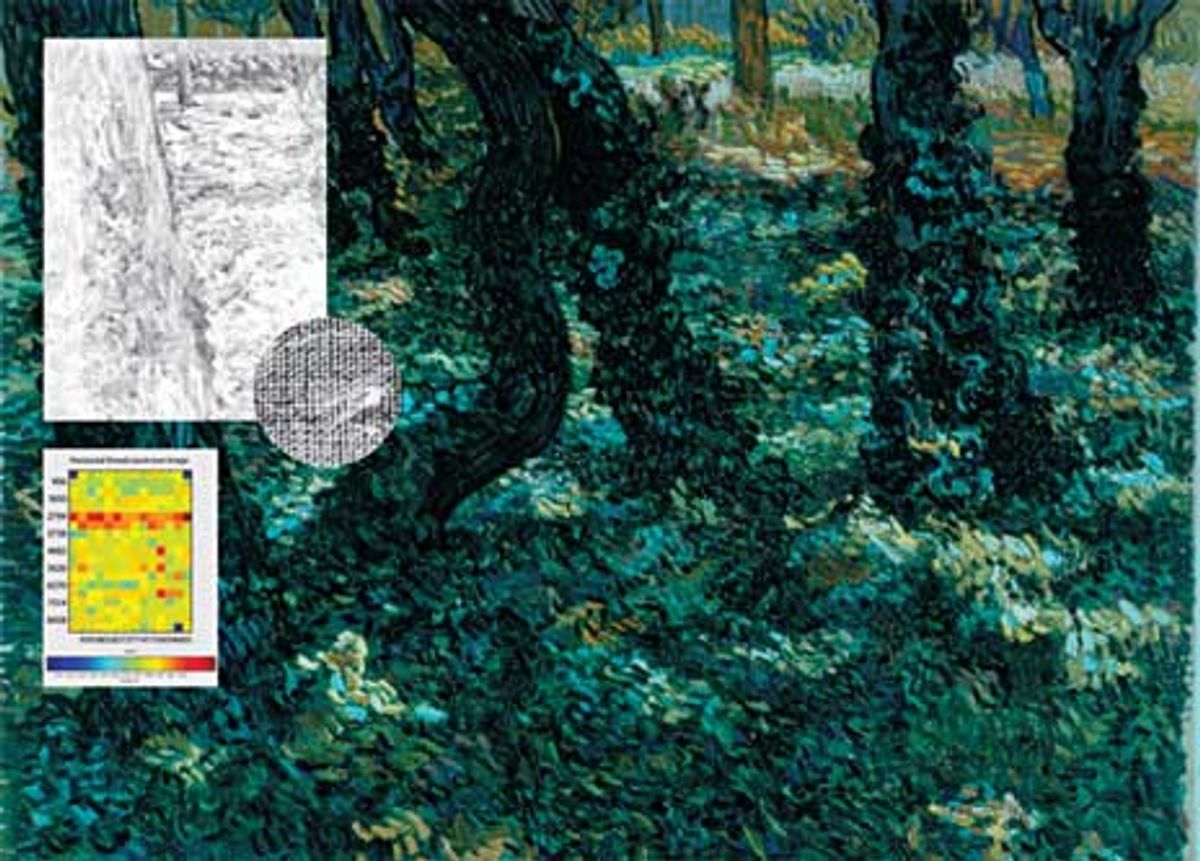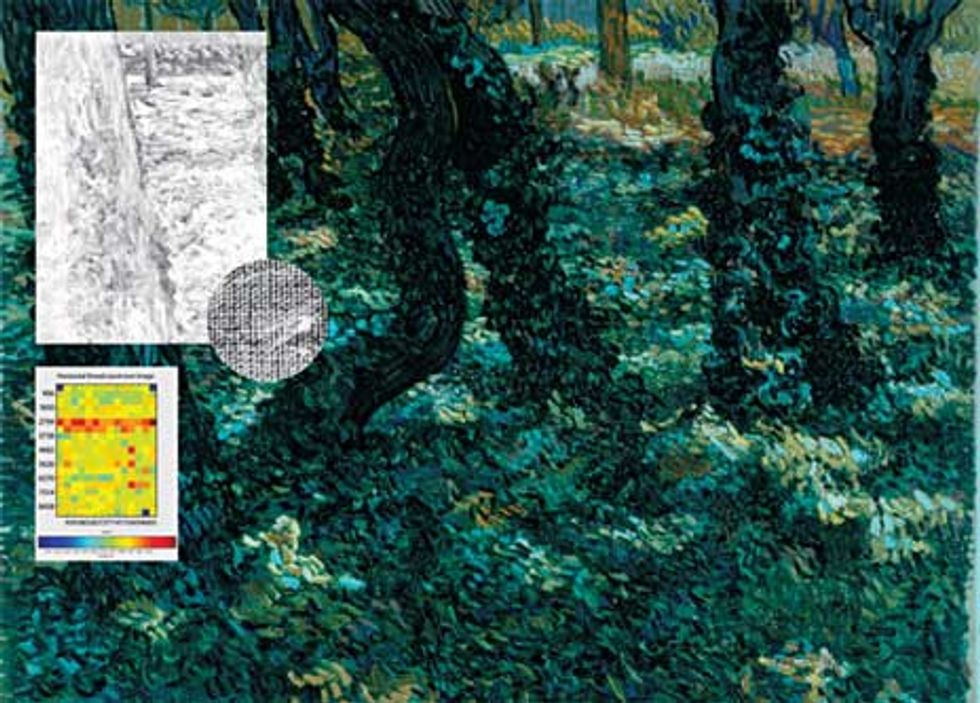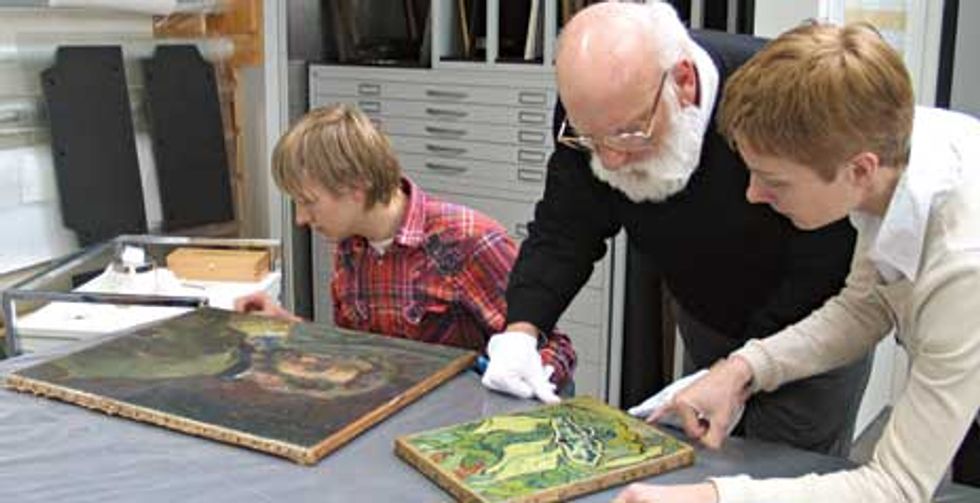How many engineering jobs let you take a van Gogh off the wall and hold it in your hands? The kind C. Richard Johnson Jr. landed. He’s both an electrical engineering professor at Cornell University, in Ithaca, N.Y., and an adjunct research fellow at the Van Gogh Museum, in Amsterdam. As such, Johnson says, he can ”speak the language of people on both sides.”
And when the two sides talk, they mainly talk about fraud and how to detect it. Two years ago, Johnson organized a conference at the museum that brought together researchers from Pennsylvania State University and Princeton, in the United States and Maastricht University in the Netherlands. Together, they processed high-resolution images with specially designed signal-processing algorithms to help sort fake van Goghs from real ones at the brushstroke level. It was the first time that image-processing teams at different universities could compare authentication approaches on the same paintings. Another workshop will follow next year at the Museum of Modern Art, in New York City.
Painting by numbers:
C. Richard Johnson [left, center] uses signal-processing algorithms to authenticate canvases believed to be painted by van Gogh.
”Fraud detection is a ’sexy’ topic, which is why it was an early focus of my activities,” says Johnson. ”But we’re 10 to 15 years away from the computer having any authority in it. So now my colleagues and I are pursuing a wide variety of issues of interest to conservators and art historians, where signal processing can provide assistance that reaches well beyond just the detection of frauds.”
Johnson’s current focus is on canvas thread counts—the number of horizontal threads crossing a vertical line 1 centimeter long—to identify paintings from the same roll of canvas. ”Placing a questioned painting on the same canvas roll as a painting known to be from a particular artist supports authentication to an artist who bought canvas in rolls, as van Gogh often did,” he says. ”When canvas is prepared with a lead white ground, the grooves between the threads are filled with radio-opaque material,” says Johnson. ”This registers in an X-ray as an intensity pattern that reveals the individual threads, permitting a calculation of the weave density.” The pattern is then analyzed with a Fourier transform, the same technique that radio engineers use to break down a signal into a series of simple sine waves.
The team is distributing the software free to museums. The Van Gogh Museum already uses the data generated to identify paintings from the same canvas roll by determining how the sections were arranged on the roll before being cut for use.
Johnson stumbled into art as he wandered through Berlin museums during a college year abroad while earning a bachelor’s in electrical engineering from Georgia Tech. Later, while working on his Ph.D. in EE at Stanford, he took a class in the Dutch masters, which rekindled his passion. In 1977, he became the first Ph.D. student to graduate from the university with a minor in art history.
He went straight into academia, teaching at Virginia Tech until 1981, when he moved to Cornell. He was named an IEEE Fellow in 1989 for his work in digital control and signal processing.
”This kind of research is not something to recommend to Ph.D. students. There are no jobs, no one’s eager to fund this, and it’s career killing for any pretenure academic,” he says, laughing. ”But for me, it’s like having a backstage pass. I go to a conservation studio and can take a van Gogh out of its frame and examine it.”
About the Author
Susan Karlin lists among her achievements acting, drawing, traveling to every continent on Earth, and writing for publications such as The New York Times, Entertainment Weekly, and Spectrum. For this issue she follows the trail of a coffee-making cellphone in ”Phone-y Brew” [p. 22] and reports on an electrical engineer who helps museums spot fake van Goghs in ”Art Fraud Forensics” [p. 23].


